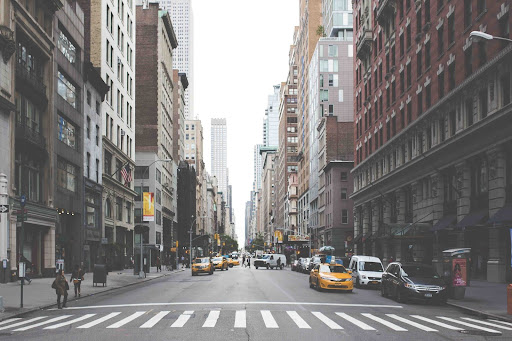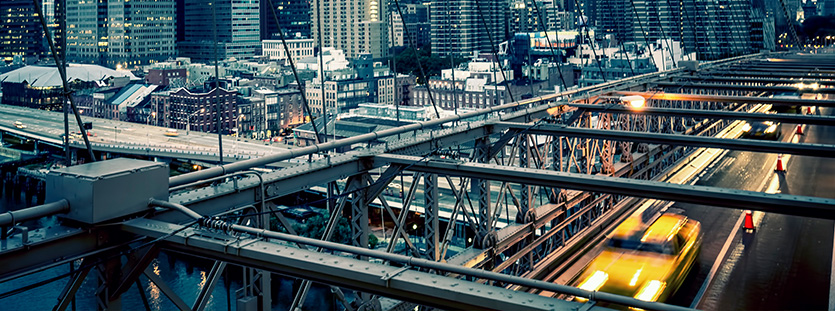New York is a vast city and it can be difficult to know the best way to navigate this to make the most of your time. No matter whether you are visiting New York or plan on living there for an extended period, time is valuable. You don’t want to be spending unnecessary amounts of time on public transport if you don’t have to. Google Maps is of course a great source of information for journeys but it doesn’t always give you the best route or account for the time taken to change subway trains. That’s why we have put together a guide to New York transportation so you can plan the best route to suit your day to day needs.

How Long is the New York Subway system?
The New York Subway system has 26 lines and 472 stations. It spans the whole of New York City, with lines also heading out to Staten Island and the Rockaways. There are also no zones for the New York subway unlike other major cities, such as London and Berlin, so you can travel a huge distance on one fare.
One of the biggest questions for people visiting or moving to New York is how easy the Subway is to navigate. The answer is it is one of the best choices of public transport in New York. As mentioned, with 472 stations you are more than likely to have a subway station just a short walk from your apartment or hotel. Although there are delays, like any mode of transport, the subway generally runs every 3-5 minutes during peak times and it of course avoids overground city traffic. You can use contactless payment options OMNY and MetroCard on the subway in New York, with OMNY rolling out fully digital payments and fare options in 2022. 39% of commuters in New York use the subway, meaning it can get very busy, which is one drawback of the transport system.
How Easy is it Driving Around New York?
Put simply, It is not easy driving around New York. As one of the busiest cities in the world, it is known for being heavily congested with huge amounts of traffic throughout the day. If you are planning on moving to New York on a long term basis or you are used to car rentals when travelling abroad, you might still be considering driving around the city. According to recent figures, 23% of people living in New York still choose to travel in their own car, so you’re not alone, but this might be out of comfort rather than ease. If you do plan on driving in New York then some things you should be aware of include;
- Unusual Road Signs – major sections of the city have no left turn road signs during certain hours, something you might not be used to. This is intended to calm traffic and police will fine you if you’re seen turning the wrong way.
- Don’t Block the Box – this is common in many major cities but doing so in New York comes with a heavy fine. So if you don’t think there is enough space it is best to hold back.
- Think About Parking – one of the biggest problems with driving in New York is affordable parking. There are all kinds of restrictions like parking too close to fire hydrants or crossings and lots of signs and restrictions all over the city so find designated parking.
How Much is a Taxi in New York?
Every New York Taxi is metered, with costs starting at $3, but the average medium fare is around $20. You will see available taxis in New York with their lights on their cars illuminated in yellow and you can hail a taxi from the roadside by holding out your hand.
There are 13,587 yellow taxi cabs in New York so you will never struggle to find a ride. If you are unsure of your route they can be a quick and easy way to get around the city. However, fares can quickly add up and if you get stuck in traffic it can take longer to get where you want to go. Ridesharing apps like Uber and Lyft are also available but have similar costs and drawbacks. Taxi fares should generally be paid in cash so make sure you always have some spare if you need to get somewhere quickly.

How to Use the New York Bus System?
NYC buses are the most popular mode of transport in New York after the subway and driving with regular services all over the city. There are local and express routes, with express buses taking fewer stops and giving the rider a faster journey around the city. Although you might get stuck in some city traffic, some people prefer riding by NYC bus rather than navigating the subway.
You can pay for the NYC bus via OMNY, MetroCard or cash. Only coins are accepted when paying by cash and the exact change is needed. You can hail a bus from one of the designated bus stops on 322 routes. It costs just $2.75 per ride and you can change buses for free within a 2 hour period.
Walking in New York
You might be wondering if you need to take public transport around the city at all, or if you can walk to the places you need. This really depends on how far you need to travel – after all, it is a large city and can take a long time to walk around. For example, walking from Wall Street to Upper Manhattan will take you over 3 hours at a good pace, and this is in the same New York borough. If you are planning on living and working in New York, it might well be possible to walk to work if you live close by, with a diverse range of restaurants and shops all over the city. However, we would recommend a combination of public transport and walking to help you make your most of the time in the city.
If you are living in more remote parts of the city then you might also want to consider using Ferry or Train services to get into the centre. These are usually mainly used by commuters and you usually wouldn’t usually need them if you are just visiting the city.
Our guide gives you an overview of the main transport links in New York City but make sure you plan out your routes and use a combination of a number of modes of transport. If you are moving to New York, make sure you get in touch with us for a quote on your removal.






